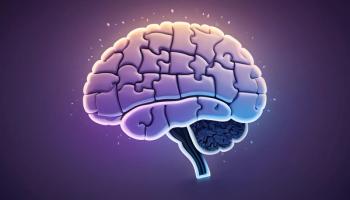
- Psychiatric Times Vol 24 No 5
- Volume 24
- Issue 5
Pain in America
Each year, the CDC's National Center for Health Statistics creates a report on the current health status of the US. In addition to the issues usually addressed in this report, such as information on morbidity and mortality, vaccination rates, and use of health care resources, the recently released report contained a special feature on pain.
Each year, the CDC's National Center for Health Statistics creates a report on the current health status of the United States. In addition to the issues usually addressed in this report, such as information on morbidity and mortality, vaccination rates, and use of health care resources, the recently released 2006 report contained a special feature on pain. The report justified this focus on pain by noting that it "affects physical and mental functioning, and can profoundly affect quality of life" and that "treating it is often expensive, time-consuming, and sometimes extremely frustrating."1
My only criticism of the report, and it is a minor one, is its characterization of pain as "a symptom produced when inflammation or changes to the nervous system due to illness or injury are transmitted to the brain, producing a physical sensation that alerts the brain that damage has occurred."1 As readers of this column are aware, chronic pain seems to be much more complex than this statement indicates and the concept that pain is virtually always initiated by peripheral change is outdated. However, the report does correctly note, "pain can have an undetectable or a nonphysical cause."1
The report contains far more information than can be included here, and I encourage those who are interested to review it. What follows are findings that I believe to be the most interesting.
The findings
The report found that pain is a ubiquitous problem, with 26% of adults (aged 20 and older) reporting that they had had pain during the month before being interviewed for the study. Women were more likely than men to experience all types of pain studied, except shoulder pain. Curiously, although it is often believed that pain is more likely to be found in the elderly, those aged 65 and older were less likely to report pain than those who were younger. However, when the elderly did have pain, it tended to last longer, with 57% reporting to have had it for 1 year or more.
Low back pain and musculoskeletal conditions
Several types of pain were studied in more depth. Low back pain (LBP) was found to be the most prevalent pain complaint, with over 25% of adults reporting to have had at least 1 episode during the 3 months before the interview. More than 30% of those aged 45 years and older reported that they experienced LBP. Surprisingly, although many possible causes of LBP, such as spinal stenosis and vertebral fractures, are more likely to occur in the geriatric population, the number of persons aged 45 to 64 years who reported LBP was essentially the same as the number aged 65 years and older. Women of all age groups were more likely to report having LBP than men, but this difference was most marked in elderly patients.
Interestingly, women of lower socioeconomic status suffered from LBP more frequently than wealthier women, but the prevalence of LBP was about the same for all males regardless of socioeconomic status.
The survey also sought to determine the frequency of association between LBP, activity level, overall health status, and psychological status. With regard to activity level, 28% of persons with LBP reported impaired activity level caused by a chronic condition versus 10% of those without LBP. The numbers in both groups increased with age. More than 50% of respondents with LBP aged 65 and older reported limitation of activity. Persons with LBP were 3 times as likely to report impaired health status as those who did not have LBP.
Arthritis and other musculoskeletal conditions that included back pain were found to be the leading cause of health-related limitation of activities in all age groups.
Psychological status was measured by the Kessler 6 instrument, which only asks 6 questions. Fewer than 10% of adults with or without LBP reported serious psychological distress, but those with LBP were 4 times as likely to report having it as those without. There was little difference between the various age groups with regard to the level of serious psychological distress, but persons aged 65 and older were the least likely to report this.
The report noted that the results cannot enlighten us regarding the nature of the association between LBP and other health problems. However, it did indicate that for many patients, LBP should not simply be viewed as an isolated problem and should be addressed in the context of the other health issues.
Headache
Migraine or severe headaches were found to occur in 20% of adults aged 18 to 44 and then to diminish in older age groups, with fewer than 10% of those aged 65 or older reporting this problem. Although headaches declined in both men and women as they aged, the greater decrease was among women. The most likely explanation of this is the frequent reduction in migraine as women enter menopause.
Joint pain
With regard to joint pain, knees were found to be the most common site, followed by shoulders, fingers, and hips. In order to determine the severity of pain, participants were asked to gauge the average level of pain during the previous 30 days on a 0 to 10 scale. A score of 7 to 10 was considered severe pain.
Joint pain is more likely to occur as one ages, with about 50% of those 65 years or older reporting it. However, only about 25% of this group had severe pain. Joint pain was not uncommon, even in younger persons (aged 18 to 44); 25% reported suffering from this problem. Overall, persons of a lower socioeconomic status tended to be twice as likely to report severe joint pain as those who were more affluent.
Therapeutic drug use
Finally, the report examined therapeutic drug use. From 1995-1996 to 2003-2004, the use of medication increased across the board, with the exception of a few classes of drugs, primarily antibiotics. With regard to analgesics, there were marked increases in the use of narcotic analgesics, NSAIDs, and nonnarcotic analgesics, which covered a wide range of drugs, including acetaminophen, aspirin (an NSAID), tramadol (Ultram, Ultracet), and medication for rheumatoid arthritis. The use of antidepressants also more than doubled from the first to the second period but the report did not determine how often these were being prescribed as analgesics.
Unfortunately, the report did not include important issues such as how frequently these medications were being used and whether they were being prescribed for short-term or more long-term use.
References:
References:1. National Center for Health Statistics. 2006 With Chartbook on Trends in the Health of Americans. Hyattsville, Md; 2006. Available at:
Articles in this issue
over 18 years ago
Functional MRI as a Lie Detectorover 18 years ago
Psychiatric Malpractice: Basic Issues in Evolving Contextsover 18 years ago
On Skepticism and Tolerance in Psychiatry and Forensic Psychiatryover 18 years ago
Understanding and Evaluating Mental Damagesover 18 years ago
Paraphilias: Clinical and Forensic Considerationsover 18 years ago
Clinical Handbook of Psychiatry and the Law, 4th EditionNewsletter
Receive trusted psychiatric news, expert analysis, and clinical insights — subscribe today to support your practice and your patients.

















